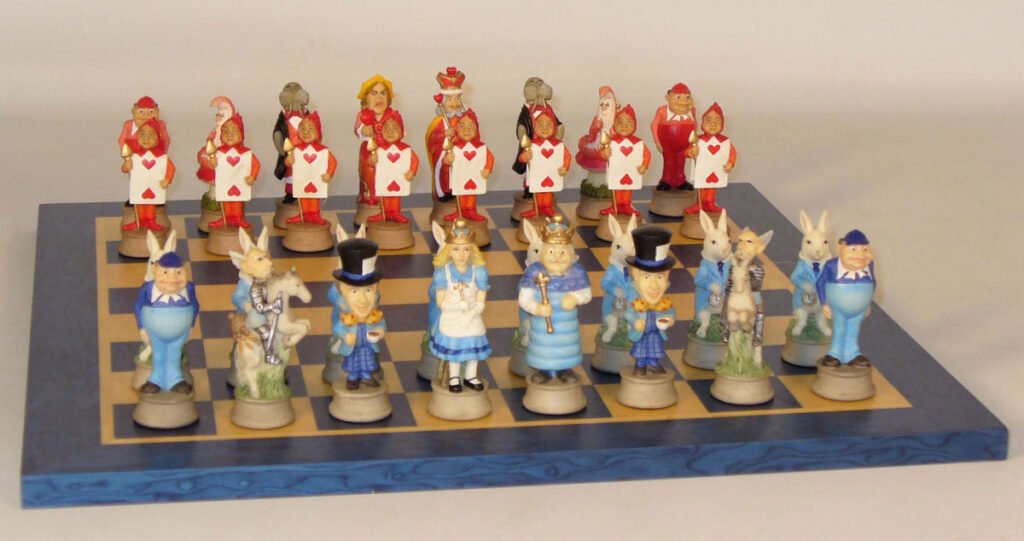Alice Chess (1953)
Alice chess
Alice Chess is a chess variant invented by V. R. Parton in 1953. It is named after Lewis Carroll’s Alice’s Adventures in Wonderland, as the game is played on a chessboard with chess pieces, but with a different set of rules. The game was first published in the magazine “Chess” in 1953.
Why is Alice chess Popular?
Alice Chess is popular among chess enthusiasts who enjoy playing chess variants. It is significant because it offers a new and unique way to play chess, with different rules and strategies than traditional chess.
Game Components of Alice Chess
How To Setup Alice Chess
To set up Alice Chess, start by arranging the pieces in their normal positions on Board A. Board B remains empty at the beginning of the game. This setup mirrors traditional chess but with the additional complexity of a second, initially vacant board.
Gameplay Mechanics and Game Objective
Player Experience
Alice Chess offers a fascinating and challenging experience, significantly different from traditional chess due to the dual-board mechanism. Players must constantly consider the implications of piece transfers between boards, adding a layer of complexity and strategy. This variant demands careful planning and adaptability, as pieces can quickly move between boards, altering the balance of power.
Pros
Cons
Personal Thoughts on Alice Chess
Alice Chess is ideal for experienced chess players looking to challenge their skills and think creatively. It is not recommended for beginners due to its complex rules and the need for a strong understanding of chess fundamentals. However, for those who enjoy strategic depth and innovation in their games, Alice Chess offers a unique and captivating experience that can enhance and refresh their passion for chess.
We are supported by our audience. When you purchase through links on our site, we may earn an affiliate commission, at no extra cost for you. Learn more.

